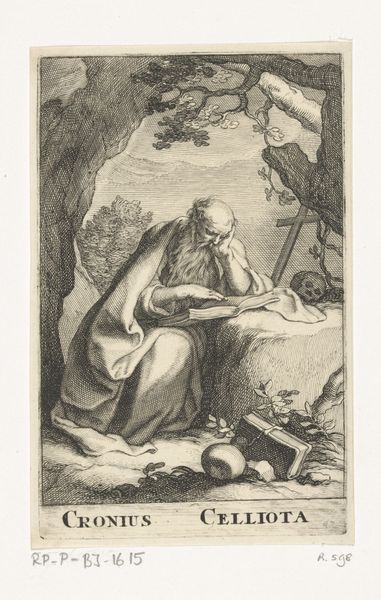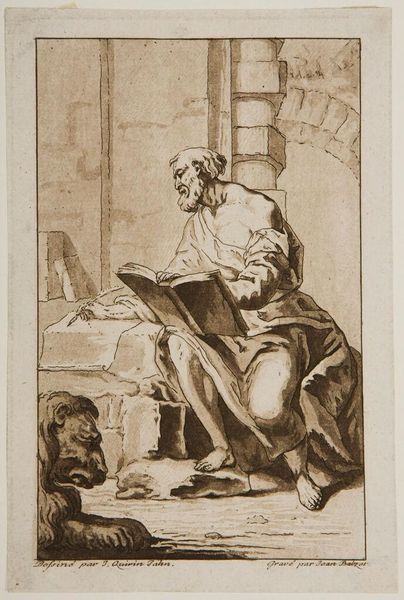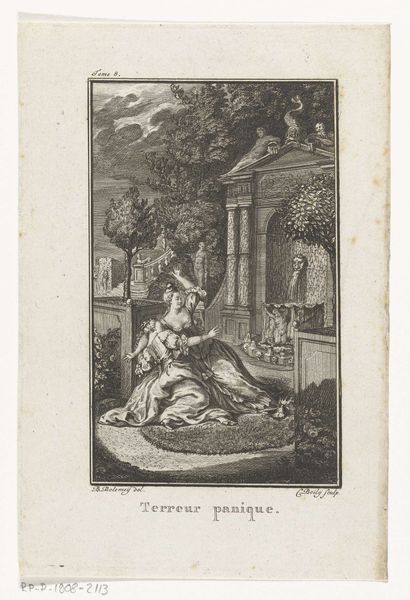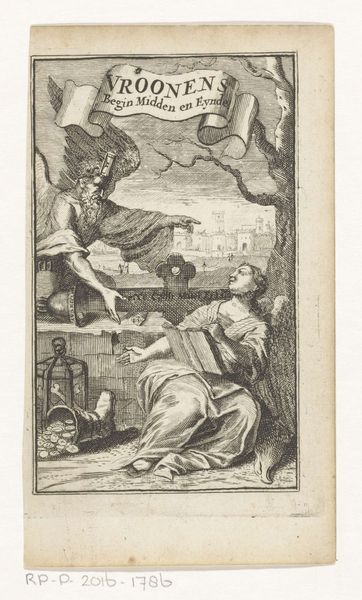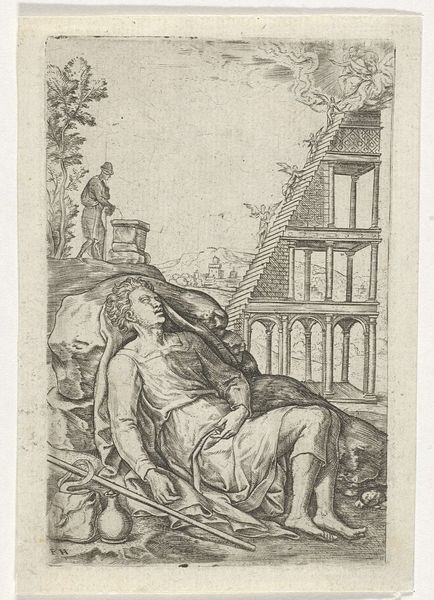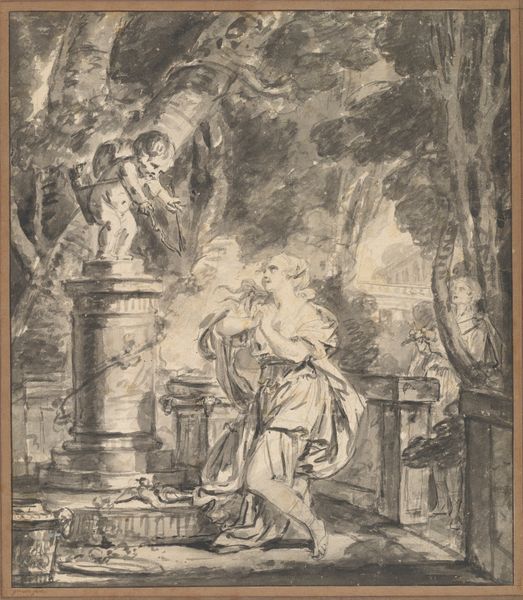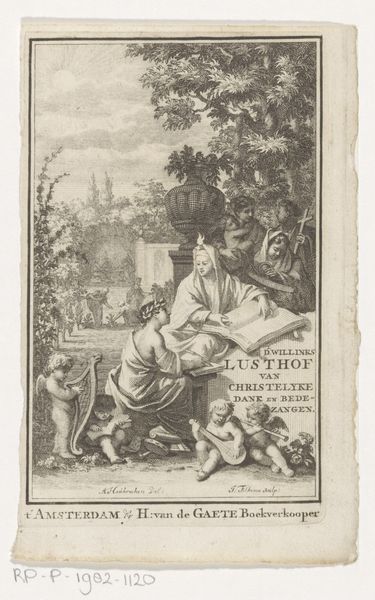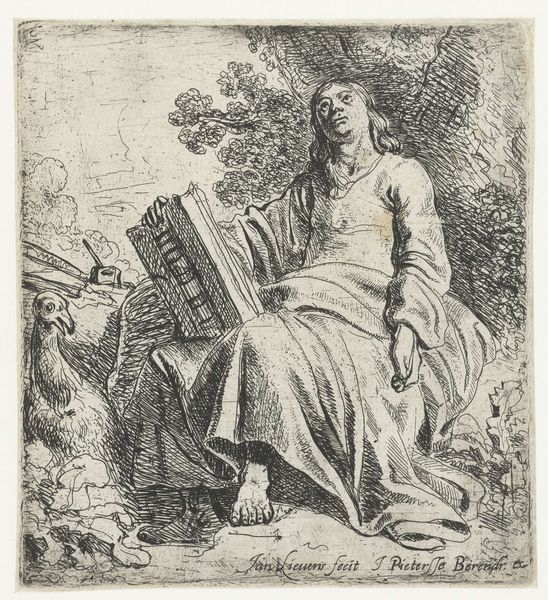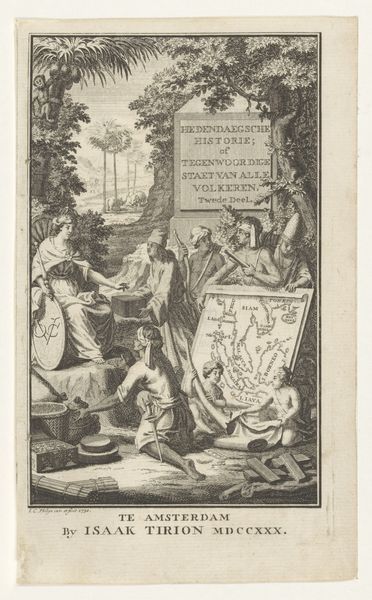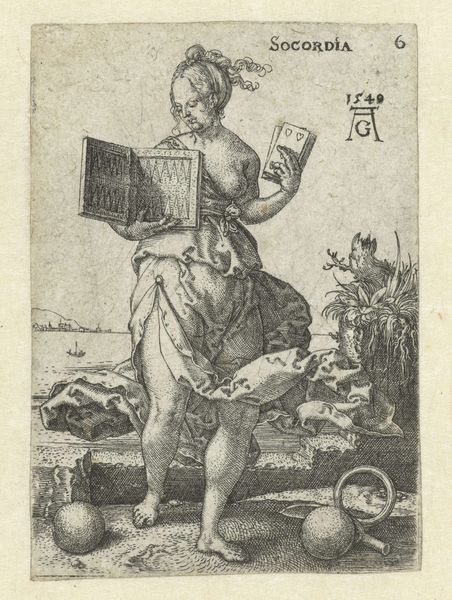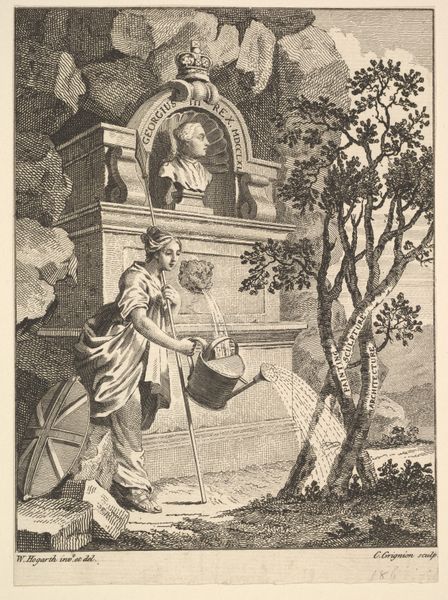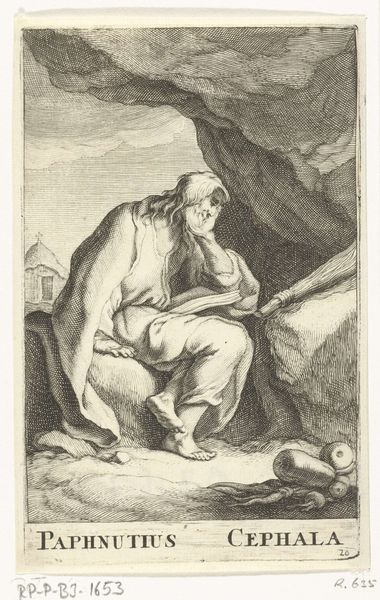
Dimensions: height 168 mm, width 99 mm
Copyright: Rijks Museum: Open Domain
This print, titled "Roem," was made by Noach van der Meer the Younger. The technique used was etching, a printmaking process with a long and fascinating history. An etcher covers a metal plate with a waxy, acid-resistant layer. The artist then scratches an image into this coating, exposing the metal beneath. When the plate is dipped in acid, the exposed lines are eaten away, creating grooves. Ink is then applied to the plate, filling the etched lines, and the surface is wiped clean. Finally, the plate is pressed onto paper, transferring the ink and creating the print. The quality of the lines in an etching depends heavily on the etcher's skill, and the amount of work involved in the production process. "Roem" showcases the precision possible with the technique. You’ll notice the incredible level of detail in the depiction of the natural world and the human figure. Etching was a highly valued skill, sitting at the intersection of craft and fine art. Considering the labor and technique involved, this etching invites us to reflect on the value and means of producing an artwork in the 18th century.
Comments
No comments
Be the first to comment and join the conversation on the ultimate creative platform.

